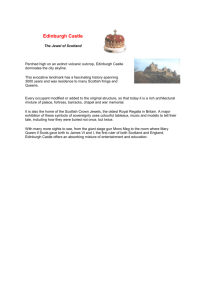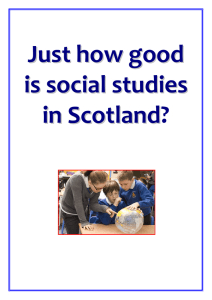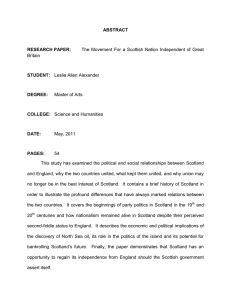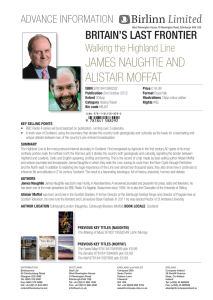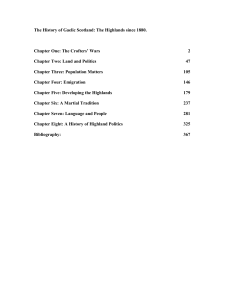SCOTLAND Culture Gram
advertisement
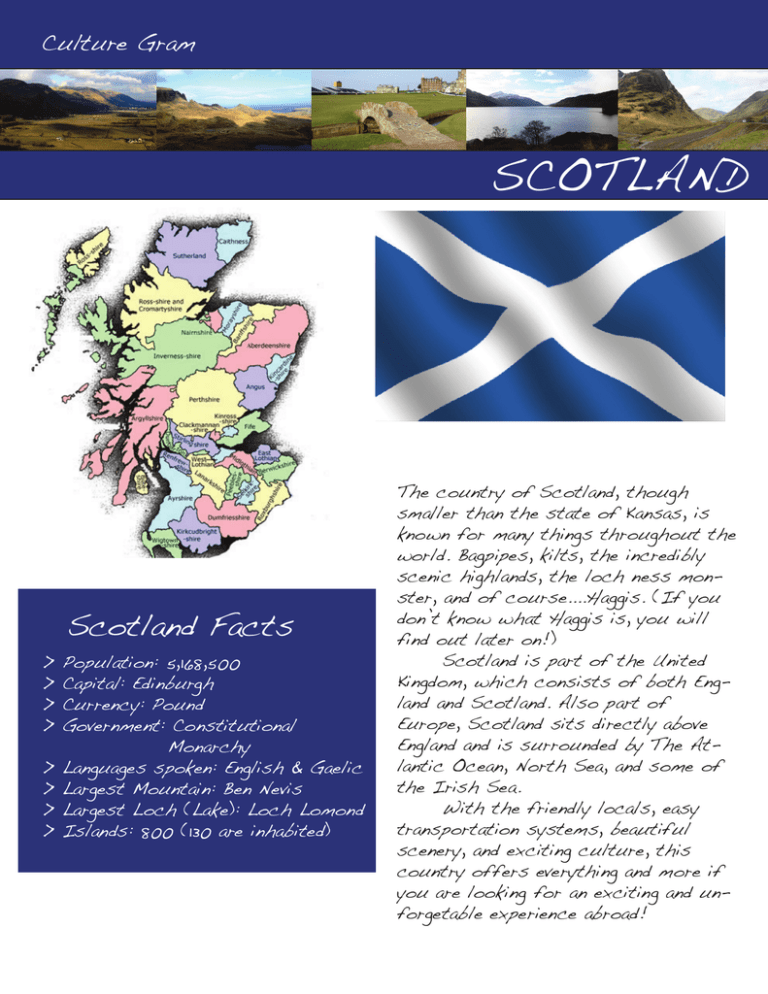
Culture Gram SCOTLAND > > > > > > > > Scotland Facts Population: 5,168,500 Capital: Edinburgh Currency: Pound Government: Constitutional Monarchy Languages spoken: English & Gaelic Largest Mountain: Ben Nevis Largest Loch (Lake): Loch Lomond Islands: 800 (130 are inhabited) The country of Scotland, though smaller than the state of Kansas, is known for many things throughout the world. Bagpipes, kilts, the incredibly scenic highlands, the loch ness monster, and of course....Haggis. (If you don’t know what Haggis is, you will find out later on!) Scotland is part of the United Kingdom, which consists of both England and Scotland. Also part of Europe, Scotland sits directly above England and is surrounded by The Atlantic Ocean, North Sea, and some of the Irish Sea. With the friendly locals, easy transportation systems, beautiful scenery, and exciting culture, this country offers everything and more if you are looking for an exciting and unforgetable experience abroad! CULTURE The People The natives are among the nicest people in Europe. Almost all are more than happy to help if you ask them for advice or directions. They are very proud of their country and are also known as very innovative. Some famous scottish inventions include the television, bicycle, the steam engine, and penicillin. Some other famous Scots are Adam Smith, David Hume, and Sean Connery. Festivals From the Highland Games to St. Andrews day, Scotland always has something going on. One of the biggest events of the summer is is the Edinburgh International Festival. For three weeks the streets are filled while visitors can see all kinds of performances by musicians, theater groups, dancers and much more. Already the most “touristy” city in Scotland, this is Edinburgh’s busiest time of year. “Of all the small nations on earth perhaps only the Ancient Greeks surpass the Scots in their contribution to mankind.” - Winston Churchill The most populated area in Scotland is towards the “lowlands” around Edinburgh, Glasgow and south of these cities. Farther north than these cities, the population grows scarce. The highlands have minimal road, train, and bus routes. The towns are much smaller and the people have much thicker accents. A small number of people in the highlands also still speak Gaelic, which is a language native to that area. Regardless of where they live, the native Scots all take great pride their culture and history. The Highland games are also held every summer, which is a tradition that incorporates competitions such as wrestling, hammer throw, tug of wars, and dancing! The highland games supposedly started around 2,000 B.C. and were held until 1746 when the highland way of life was was destroyed by the English (Act of Proscription). This followed the battle of Culloden which destroyed the last of the highland way of life. Forty years later, the ban was lifted, King George IV visited Edinburgh dressed in full Scottish highland clan attire, and the games resumed!

